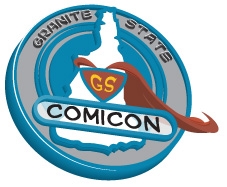In 1950 Alan Turing devised a series of tests, which have come to be known as The Turing Test. This test tries to formulate a philosophical basis for the question, “Can a machine convince a human that it is human simply by intellectual interaction?” or, “Can a machine think?” As sick as one can get of R2D2 or Hal9000 or Huey, Dewey and Louie, the culture is riddled with speculative fiction and scientific inquiry into the question Turing asked 60+ years ago. IBM is about to advance the question to the next level. They are attempting to build Projective Artificial Intelligence with the intent to recreate human thought, not merely recycle phrases but to logically and quasi-humanly process, to induce the listener to believe in its sentience; perhaps one day to believe in its own sentience, becoming the Mycroft Holmes of the moon colony.
In 2007 IBM began working on creation of Watson, a process of mechanical deep analytics combined with natural language processing. The future Dr. Susan Calvins of the world began to test and refine the Watson project, with the eventual outcome to compete in a verbal thinking match with humans. This original concept was refined to meet a cultural phenomenon: the television show Jeopardy. Our best hopes and worst fears are about to come true.
Watson, named for IBM’s founder Thomas J Watson and not Sherlock’s sidekick, is being developed as part of their DeepQA Research Project, designed for hypothesis generation, evidence gathering and analysis. On February 14th thru 16th, Watson will “compete” against humans in a round of Jeopardy. To make the program even more impressive, Watson will be “competing” with Ken Jennings and Brad Rutter, two of the most famous winners on the show and world-renowned know-it-alls.
We will post more information as it becomes available. For now , here is a short film about how Watson came to begin to “think”.
This is Dome, sayin: Soylent Green is Humans…oh wait… wrong dystopia.






Here’s a case where science fiction has anticipated the question…and goes one step further in examining what happens if the answer to the “Turing question” is yes. The “Frankenstein complex” (to quote Dr Susan Calvin) is pervasive in science fiction from before the times it was known as such, and pretty much paints the picture that humans will resist and fear having “created life” being indistinguishable from human life. Asimov, of course, battled against that complex (through his many fictional proxies, most notably Susan Calvin), but addressed the “Turing question” pretty directly in his short story Evidence (in I, Robot). Of course it’s never totally clear whether Stephen Byerley is a robot or not…just as it’s not clear that Heinlein’s Mycroft Holmes is one to those who don’t know. And of course my namesake (R. Daneel Olivaw) passes for human in multiple situations, including as the advisor to the Emperor in the Foundation series. One can only hope that if the answer is “yes” that Asimov’s vision that (taking liberties with his words a bit) if a humanoid robot was indistinguishable from a man (mentally) that the question would be whether it was a robot…or just a very good human being. Hurray for the Four Laws of Robotics (including the Zeroth Law as formulated by R. Daneel).